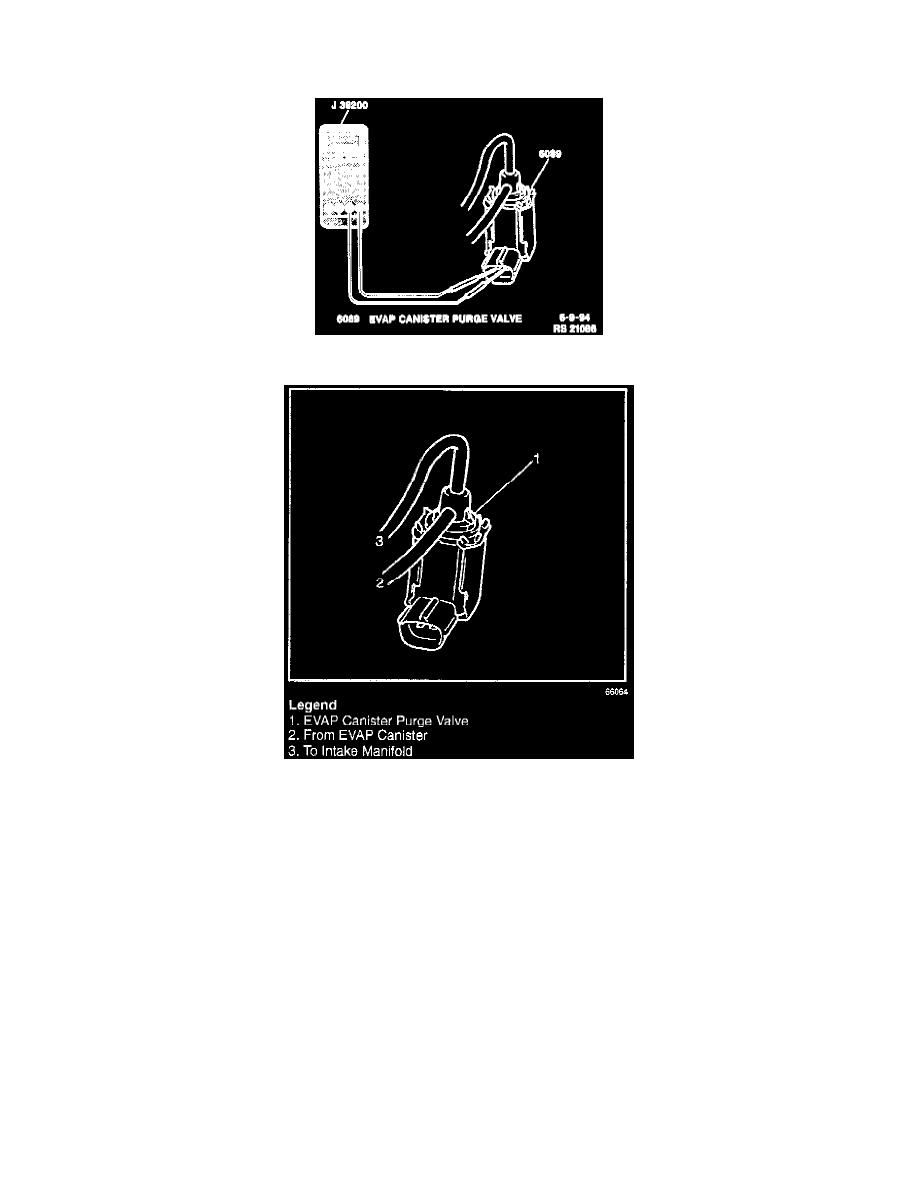Metro L4-079 1.3L VIN 9 TBI (1995)

Canister Purge Control Valve: Testing and Inspection
With Tank Pressure Control Solenoid Vacuum (Tpc SV) Valve
Measuring EVAP Canister Purge Valve Resistance
Inspecting Evaporative Emission (EVAP) Canister Purge Valve
EVAPORATIVE EMISSION CANISTER PURGE INSPECTION
WARNING: Do not suck air through the Evaporative Emission (EVAP) canister purge valve tubes and hoses. Fuel vapor inside the
EVAP canister purge valve is harmful.
TOOL REQUIRED
J 39200 Digital Multimeter
PROCEDURE
1. Disconnect the EVAP System canister purge valve electrical connector.
2. Using the J 39200, measure resistance of the EVAP canister purge valve between both terminals. If resistance is not 33 to 39 ohms at 20°C (68°
F), replace the EVAP canister purge valve. Refer to EVAP Canister Purge Valve / Service and Repair.
If the resistance is within specification, proceed with Step 3.
3. Disconnect the EVAP canister purge valve vacuum hoses from the intake manifold and the vacuum pipe (from EVAP canister).
4. Blow into the EVAP canister purge valve vacuum hose that was disconnected from the vacuum pipe. Air should not pass through the EVAP
canister purge valve and exit from the intake manifold hose.
5. Connect 12 volts DC to the EVAP canister purge valve terminals.
6. Blow into the EVAP canister purge valve vacuum hose that was disconnected from the vacuum pipe. Air should pass through the EVAP canister
purge valve and exit from the intake manifold hose.
